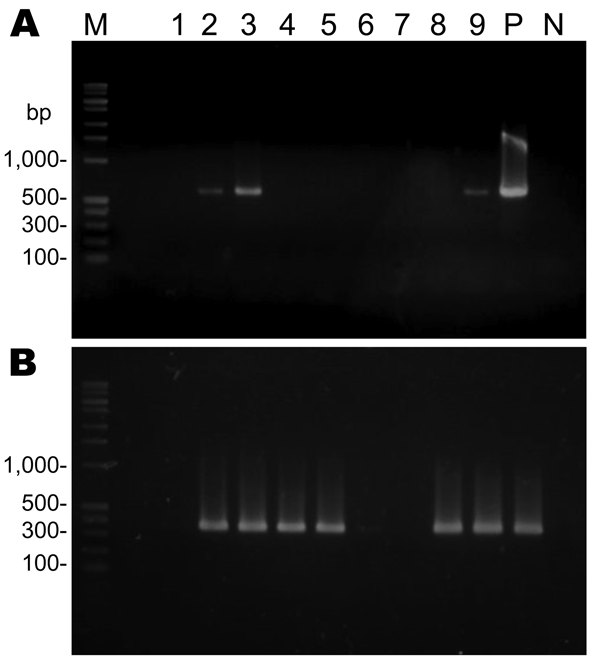Volume 16, Number 12—December 2010
Letter
Imported Leishmaniasis in Dogs, US Military Bases, Japan
Figure

Figure. PCR amplification of the Leishmania spp.–specific small subunit rRNA gene from skin biopsy specimens from infected dogs, Japan. DNA samples (100–200 ng) were subjected to primary PCR (A), followed by nested PCR (B). Lanes 1–4, skin DNA samples from patient 1; lanes 5–9, skin DNA samples from patient 2; M, DNA molecular marker; P, positive control; N, negative control.
Page created: August 28, 2011
Page updated: August 28, 2011
Page reviewed: August 28, 2011
The conclusions, findings, and opinions expressed by authors contributing to this journal do not necessarily reflect the official position of the U.S. Department of Health and Human Services, the Public Health Service, the Centers for Disease Control and Prevention, or the authors' affiliated institutions. Use of trade names is for identification only and does not imply endorsement by any of the groups named above.